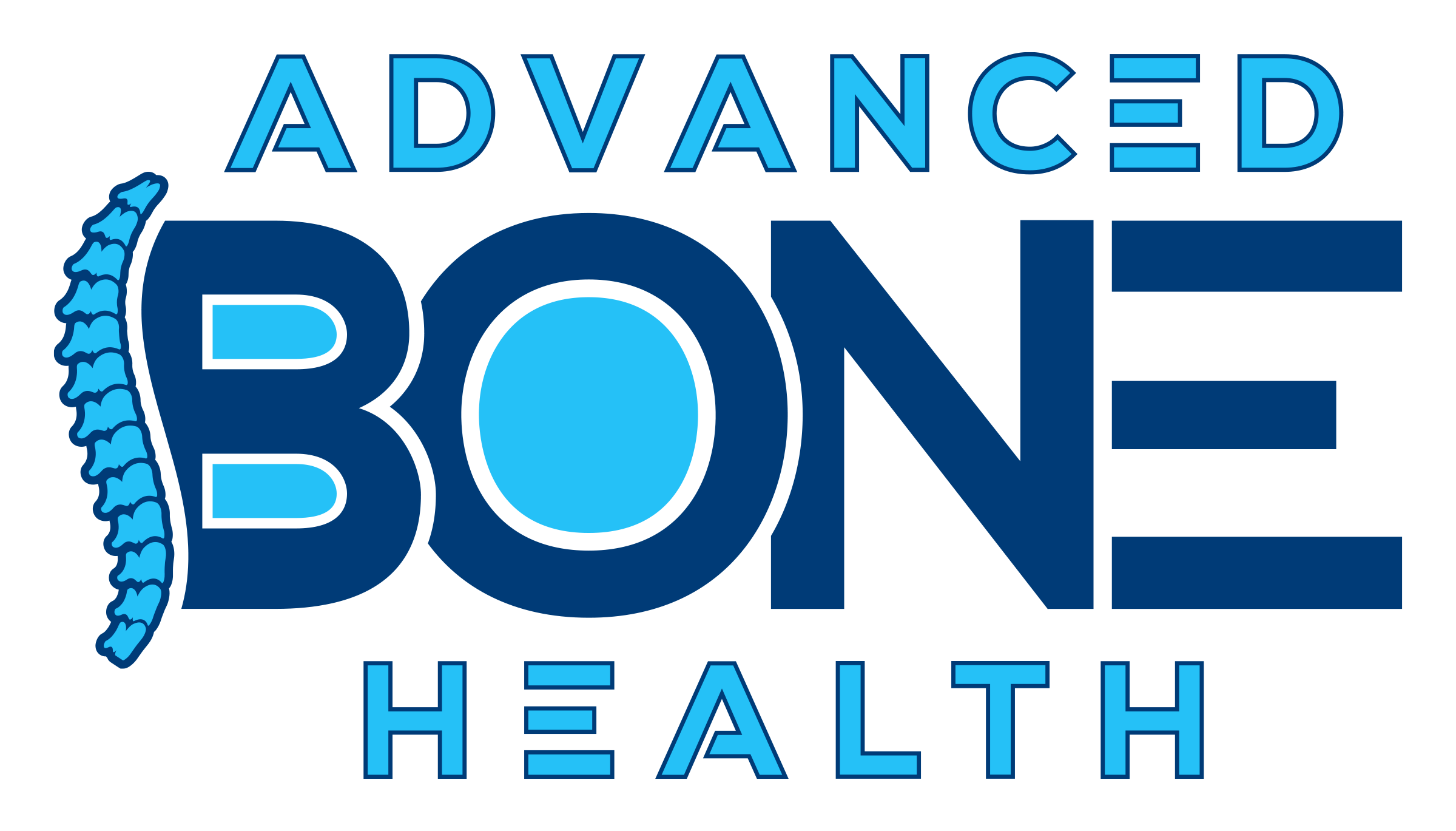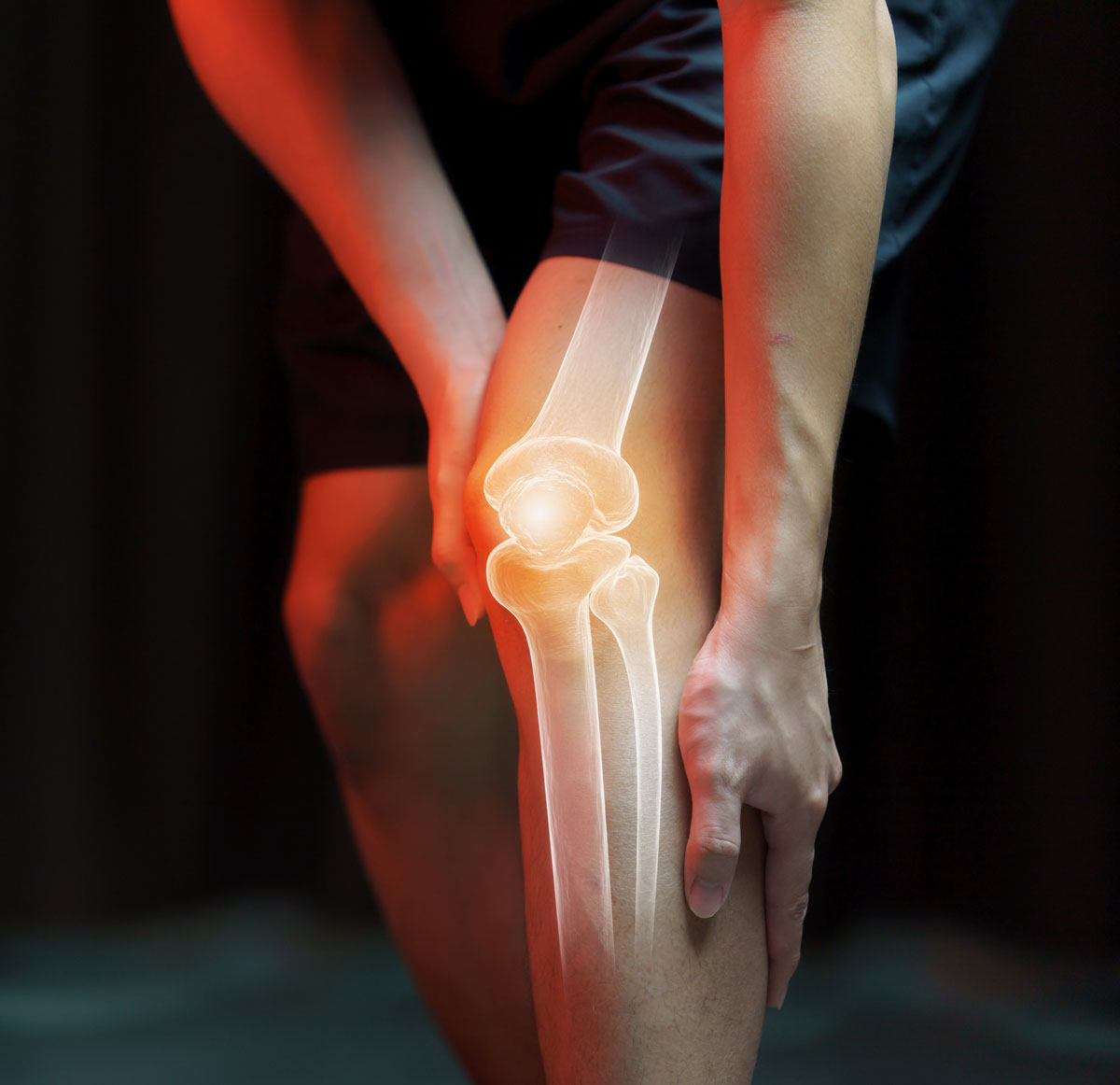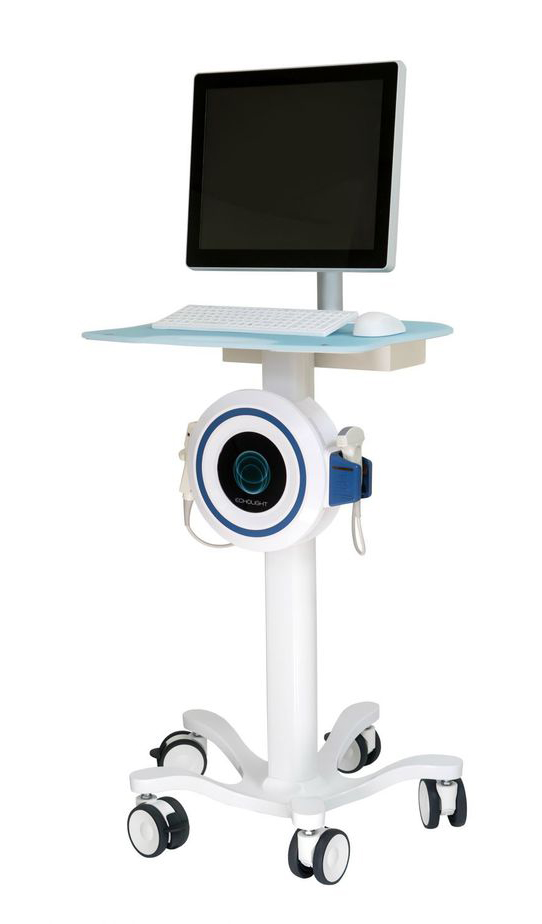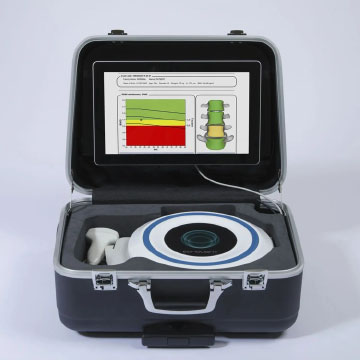What is the EchoS REMS scan from Echolight?
Echolight System (EchoS) has developed the first clinically available method for the direct non-ionizing measurement of lumbar and femoral bone mineral density (BMD). The device, EchoS, utilized proprietary R.E.M.S. (Radio-frequency Echo-graphic Multi Spectrometry) technology to scan the lumbar vertebrae and proximal femur. The EchoS rapidly generates a medical report that includes BMD, T-Score and Z-score. In addition, the system automatically assesses the quality of bone micro-architecture, Independent of BMD, and provides a five-year probability of major osteoporosis fracture (Fragility Index). EchoS offers significantly increased levels of accuracy, sensitivity to bone mass changes and diagnostic reproducibility over Dual-energy X-ray absorptiometry [DEXA systems] (The old system). This, coupled with the absence of ionizing radiation, allows for osteoporosis diagnostic at the point care more broadly and at an earlier stage. It also enables more accurate monitoring post diagnosis.

- REMS is equivalent to DEXA in determining bone mineral density (BMD), according to World Health Organization standards.
- REMS can be used to diagnose and monitor osteoporosis.
- REMS is ultrasound-based and radiation-free.
- REMS assessments are done in a provider’s office, producing immediate results.
- REMS is portable (and thus, of significant public health value).
- The REMS learning curve is not steep, as the technology is not prone to user error.
- REMS is not prone to artifact error or patient positioning error.
- REMS has a low LSC (0.5% to 1.0% error rate) and can be used to monitor bone over short periods of time.
- REMS not only measures BMD, but it also provides a Fragility Score.
- Fragility Score is a measure of bone “quality.”
- The FDA approved REMS technology in the U.S. in 2018.
- REMS is used in the European Union and multiple other countries, including Italy, Belgium, France, the United Kingdom, Poland, Australia, Japan, India, Brazil, Canada, Spain, and the United States.
- REMS was designated the official method for bone densitometry in Italy in 2020.
Early diagnosis of osteoporosis is difficult.
Since osteoporosis shows no symptoms in its early stages, the conditions often is not diagnosed for several years. Bone strength is primarily dependent on bone density along with the toughness of bones.
Bone “densitometry” refers to the process of testing bone density at key sites; namely the lumbar region of the spine, the hip, the wrist or the heel.
A low bone density can indicate a potential fracture risk. The World Health Organisation (WHO) have devised a method whereby bone density calculations can be used to track bone health after a diagnosis of osteoporosis:
There are two major techniques available for the diagnosis of osteoporosis:
• DEXA (dual-energy X-ray absorptiometry) – using X-rays has long been considered the gold standard in bone densitometry,
• REMS (radio frequency echographic multi-spectrometry) – using ultrasound and radiofrequency: the New Echolight ultasound bone Densitometer
According to the World Health Organization (WHO) diagnostic classification, a bone mass density (BMD) at the hip or lumbar spine that is less than or equal to 2.5 standard deviations (SD) below the mean BMD of a young-adult reference population (corresponding to a T-score ≤−2.5) defines the status of osteoporosis. It is important to underline that the diagnosis of osteoporosis is a risk factor for fractures. The limitations of the current technologies have resulted in underdiagnosis and undertreatment of osteoporosis and have typically postponed the diagnosis of osteoporosis after the occurrence of the first fracture. These considerations have encouraged the research towards diagnostic methods complementary or alternative to the current gold-standard dual X-ray absorptiometry (DEXA). Several different approaches have been proposed, Further clinical studies are anyway warranted to clearly assess the strengths of various techniques and sites since, currently, no univocal results have been presented. An innovative non-ionizing approach called Radiofrequency Echographic Multi Spectrometry (REMS) has been introduced. This novel technology is based on the analysis of the raw unfiltered ultrasound signals acquired during an echographic scan of lumbar spine and/or femoral neck and provides a DEXA-equivalent BMD value. The precision and diagnostic accuracy of REMS as compared to DEXA have been already validated in both single-center and multicenter studies, and it has been recently presented as the first clinically available method for direct non-ionizing measurement of lumbar and femoral BMD for osteoporosis diagnosis and fracture risk prediction in the context of an expert consensus meeting organized by the European Society for Clinical and Economic Aspects of Osteoporosis, Osteoarthritis and Musculoskeletal Diseases (ESCEO) .
Radiofrequency echographic multi spectrometry for the prediction of incident fragility fractures: A 5-year follow-up study (Bone, Volume 134, May 2020, 115297)
Also, The diagnostic accuracy of REMS in comparison with DEXA has been investigated in a European multicenter clinical context. The obtained results demonstrated a very high correlation between DEXA and REMS-measured BMD and T-score values in a population of women aged between 30 and 90 years. An excellent performance in the identification of patients with osteoporosis has been obtained, with sensitivity and specificity both over 90%, PPV in the range 82–86% and NPV over 97% for both reference anatomical sites. Moreover, REMS measured T-score values were associated with the occurrence of previous osteoporotic fractures, even at a slightly higher degree than corresponding DEXA T-score values.
Further ongoing studies will be dedicated to the assessment of REMS diagnostic performance in a male population and to its employment for the calculation of parameters specifically dedicated to the assessment of bone quality independently from BMD.
Radiofrequency Echographic Multi Spectrometry (REMS) for the diagnosis of osteoporosis in a European multicenter clinical context Bone, Volume 143, February 2021, 115786
THE OLD versus THE NEW — DEXA versus Echolight system:
DEXA stands for duel-energy X-ray absorptiometry, a technology that emits small doses of ionizing radiation to capture images of your body. It’s simple but subject to error. For example, if you happen to lie differently during one DEXA scan compared to the last, your results may be skewed. If you move during the scan, your images may come out blurry.
Echolight, on the other hand, minimizes the probability of error because it exclusively analyzes the interactions of ultrasound waves with your bone tissue. This system won’t provide faulty images because, if the result isn’t of acceptable quality, the system asks us to retake the image.
Additionally, new Ultrasound doesn’t require you to be as still or as particularly positioned as you must be with a DEXA scan, because the new Ultrasound system doesn’t pick up on a movement as the DEXA does.
Also, an improperly done DEXA can produce incorrect BMD results that are imprecise and unreliable. This unreliability can result in recommendations for treatments that are not appropriate. And because Echolight analyzes raw unfiltered ultrasound signals, it recognizes even the smallest bone tissue details, deriving the most precise BMD measurements and bone quality measurements. And, in a few minutes.
Another important issue, Because DEXA scans use radiation, there are multiple risk factors in doing the scan like for example for pregnancy. Unlike DEXA technology, Echolight doesn’t use ionizing radiation (X-rays) to analyze bone density, so it is safe and can be used in a lot of situations in which one couldn’t use x-ray radiation, like for example pregnancy.
Perhaps the most profound benefit is that Echolight provides an accurate, non-invasive bone density scan without radiation, with bone quality assessments meaning that it’s safe to take a new scan at regular intervals. This can help to keep track of bone mineral density as long it is needed.
| Key Advantages | DEXA | Echolight |
|---|---|---|
| Radiation Exposure | YES | NO |
| Axial Sites | YES | YES |
| Bone Density Assessment BMD (g/cm2) | YES | YES |
| Bone Quality Assessment | NO | YES |
| FRAX Index | YES | YES |
| Body Composition Index | YES | YES |
| Operator Independent | NO | YES |
| Accuracy | HIGH | VERY HIGH |
| Primary Care | NO | YES |
| Cost | HIGH | LOW |
| Operator Certified Needed | YES | NO |
| Dedicated Shield Room | YES | NO |
| Maintenance Costs | YES | NO |
| Diagnostic Tool | YES | YES |
| Prevention, Monitoring and Follow-up | NO | YES |
The new modern day ultrasound bone density test
Now two decades later Italian scientists have developed a modern ultrasound device that is capable of measuring bone at the hip and the spine. Extensive testing done between 2013 and 2016 suggests that this new Radiofrequency Echographic Multi Spectrometry (REMS) device may be an effective radiation-free way to assess bone density and, even more, to evaluate bone strength and fracture risk. The ultrasound device known as Echolight was recently approved by the FDA and doctors in the US are beginning to give it a try.
BoneScan offers this service from its location at 894 Saint Mary Rd. We can reach you anywhere with our portable EchoS either in your home or at long-term care facilities.



